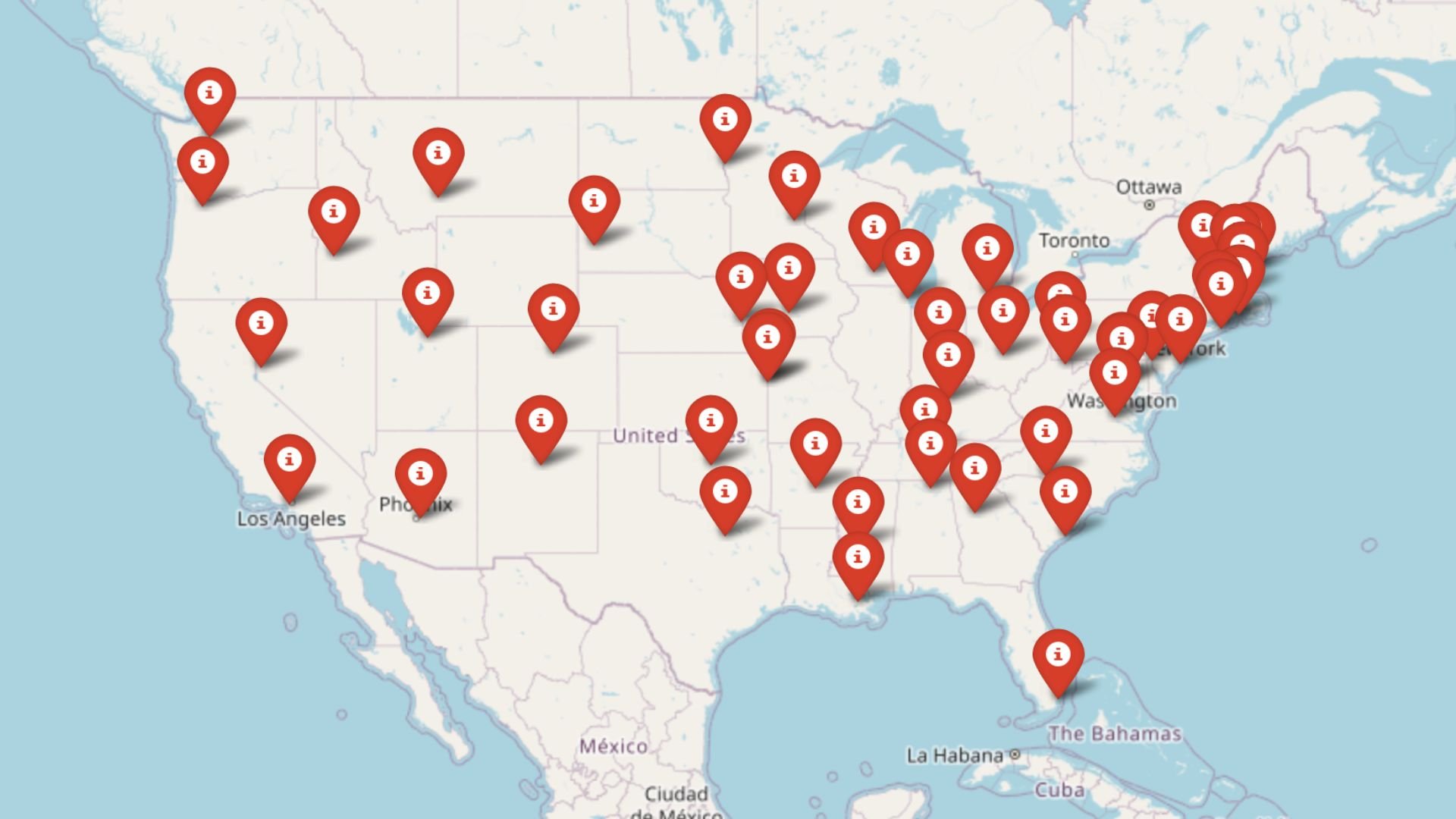The Channel Islands, nestled between the southern coast of England and the northern shores of France, are a mosaic of hidden gems waiting to be discovered. Away from the hustle and bustle of modern life, these islands in the English Channel boast secluded towns where time seems to stand still. From car-free sanctuaries to quaint fishing villages, each locale offers a unique blend of natural beauty, rich history, and tranquil charm. Join us as we count down ten of the most secluded towns in the Channel Islands region, perfect for those seeking peace, adventure, or a touch of old-world allure.
10. Rozel: Jersey’s Enchanting Fishing Village
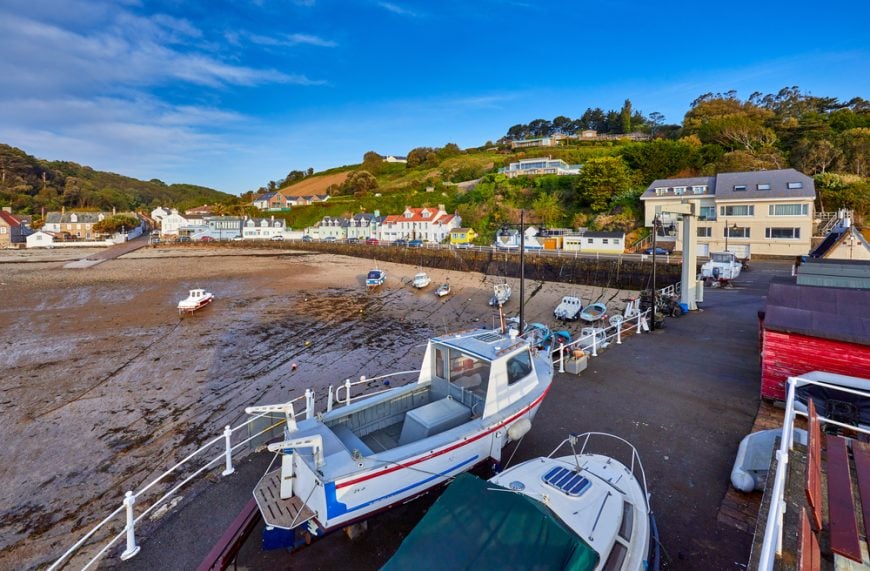
Nestled on Jersey’s northeastern coast, Rozel is a quaint harbor village with a close-knit community of around 200 residents. Visitors can wander along the small sandy beach, admire the colorful fishing boats, or enjoy fresh seafood at local eateries like the renowned Rozel Bay Tea Room. Fishing remains a staple industry, with local fishermen supplying the village’s restaurants with the day’s catch. Rozel’s seclusion comes from its tucked-away location, surrounded by lush green hills and away from the island’s busier tourist spots, offering a peaceful retreat where life moves at a gentler pace.
Where is Rozel?
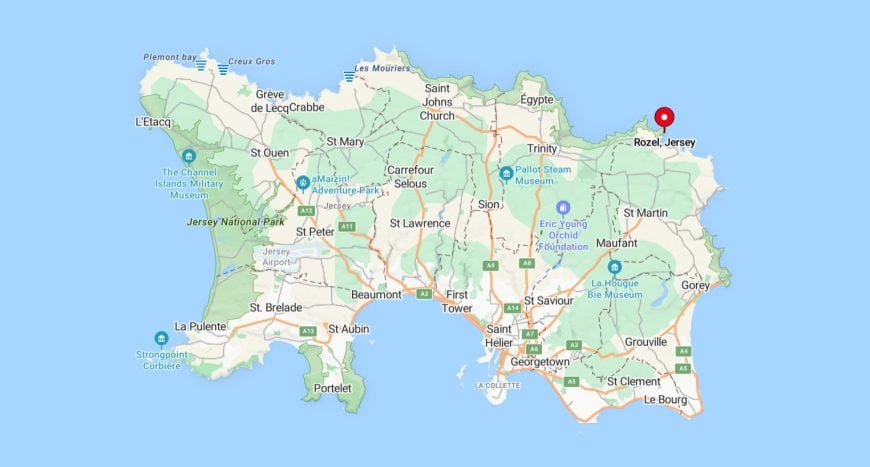
Rozel is situated on the northeast corner of Jersey, the largest of the Channel Islands. Its secluded nature is enhanced by winding country lanes that lead to the village, flanked by dense woodlands and dramatic cliffs. Accessible primarily by car or local bus services, the journey to Rozel offers scenic views of the island’s countryside. This hidden harbor remains a gem for those looking to escape the crowds and immerse themselves in Jersey’s natural beauty.
9. St. Saviour: Guernsey’s Green Heart
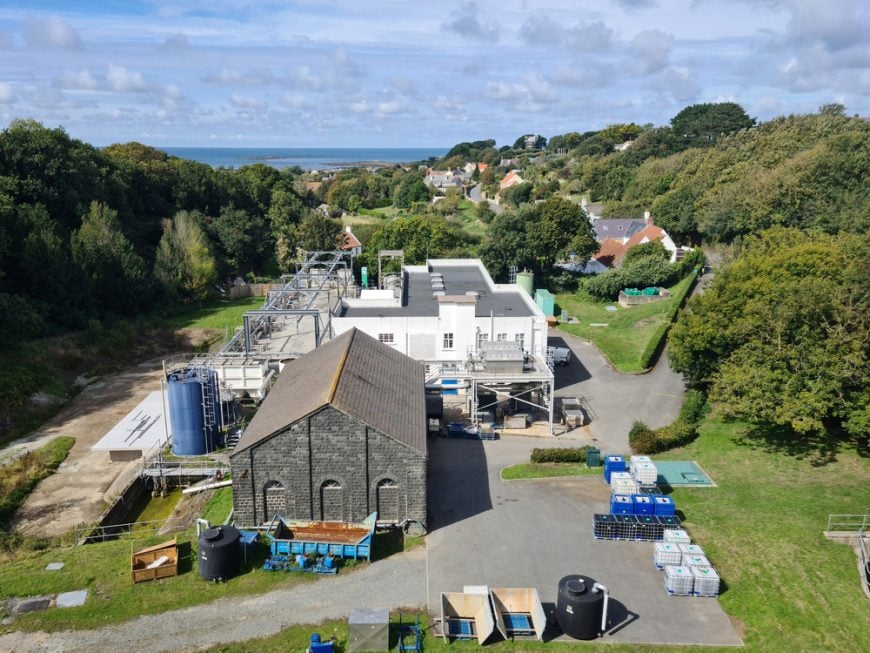
St. Saviour, home to just over 2,000 residents, is a lush parish in Guernsey known for its rolling countryside and rich agricultural traditions. Visitors can explore historic sites like the 12th-century St. Saviour’s Church or enjoy leisurely walks around the tranquil St. Saviour’s Reservoir. Agriculture is a key industry here, contributing to the parish’s serene pastoral character. Its seclusion stems from expansive green spaces, quiet lanes, and the absence of urban development, making it a haven for those seeking peace and a connection with nature.
Where is St. Saviour?
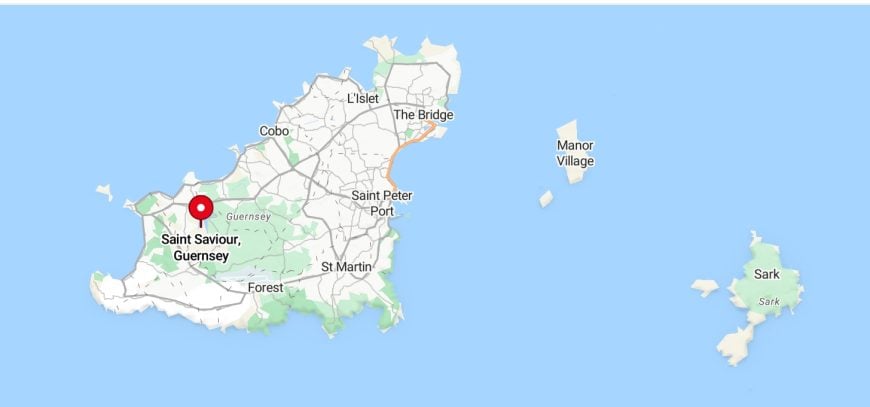
Located in the western part of Guernsey, St. Saviour sits amidst the island’s rural interior. The secluded charm is accentuated by surrounding farmlands and limited traffic on its narrow roads. To reach St. Saviour, visitors can drive or take local buses from St. Peter Port, enjoying a journey through picturesque countryside. This parish remains one of Guernsey’s best-kept secrets, ideal for those wishing to escape the hustle and bustle of modern life.
8. St. Pierre du Bois: Guernsey’s Pastoral Haven

With a population of approximately 1,600, St. Pierre du Bois is a charming rural parish in Guernsey known for its traditional cottages and peaceful countryside. Visitors can stroll along quiet lanes, visit the quaint St. Peter’s Church, or take in panoramic views from the coastal cliffs at Rocquaine Bay. The main industries revolve around agriculture and small-scale farming, underscoring the area’s rustic ambiance. The parish’s seclusion is characterized by unspoiled landscapes and minimal commercialization, making it a perfect countryside retreat.
Where is St. Pierre du Bois?
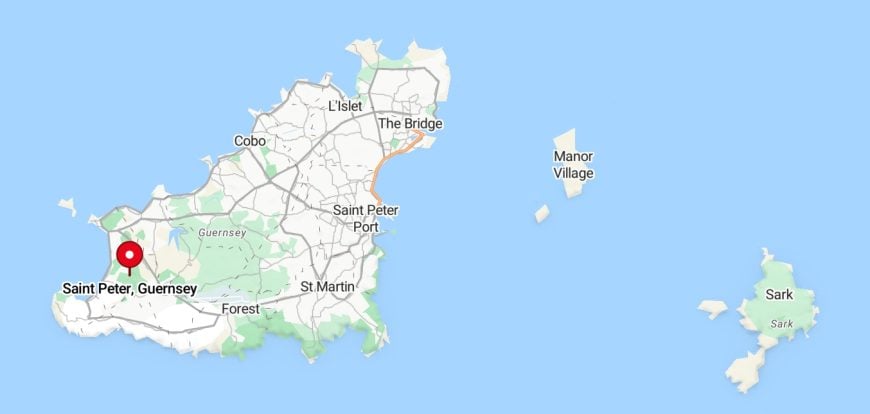
Situated in the southwest of Guernsey, St. Pierre du Bois is nestled amidst the island’s rolling hills and scenic coastlines. Its remote feel is enhanced by rural roads weaving through farmlands and pastures, away from main thoroughfares. Accessible by car or local transport from St. Peter Port, the journey offers glimpses of Guernsey’s idyllic countryside. This tucked-away parish provides a tranquil setting for visitors seeking solitude amid natural beauty.
7. Trinity: Explore Jersey’s Peaceful Northeast
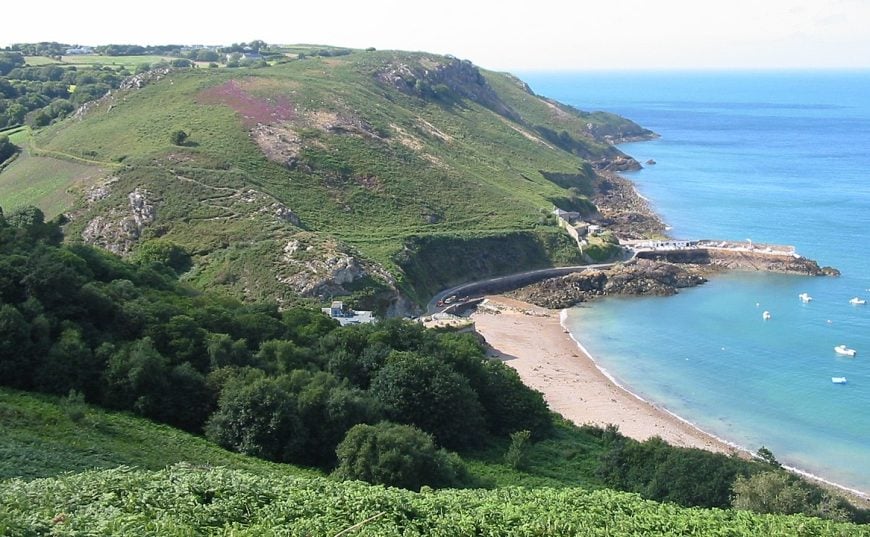
Trinity, with a population of around 3,000, is a serene parish celebrated for its lush woodlands and coastal views. Visitors can explore the renowned Jersey Zoo, founded by conservationist Gerald Durrell, or wander through the ancient Trinity Church. Agriculture plays a significant role in the local economy, contributing to the area’s pastoral charm. Trinity’s seclusion arises from expansive green spaces, unspoiled landscapes, and a community that cherishes the tranquility of rural life.
Where is Trinity?
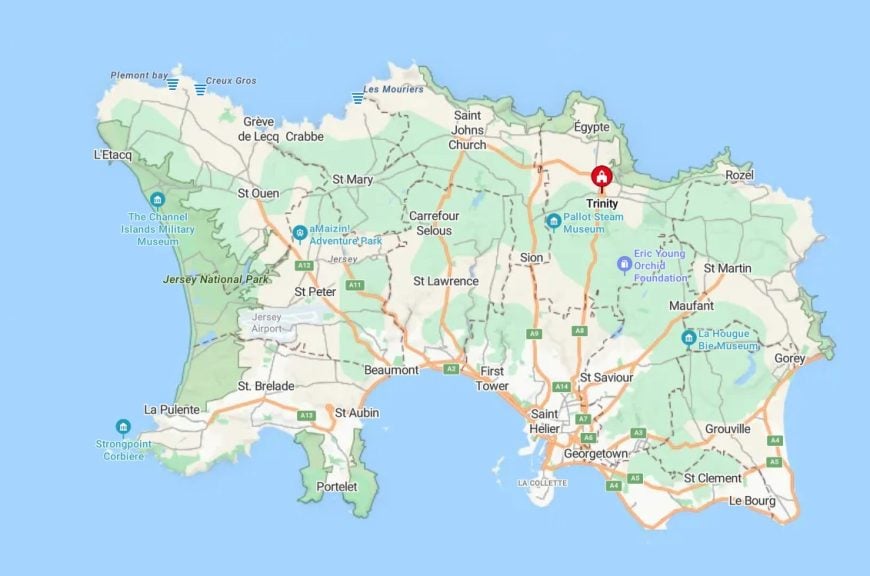
Located in the northeast of Jersey, Trinity stretches from the island’s central plateau to its rugged northern coast. The parish’s secluded nature is enhanced by its woodland areas and sparsely populated neighborhoods. Accessible by car or public transport from St. Helier, Trinity offers a peaceful escape just a short journey from the island’s capital. Its network of country lanes and hidden coves contribute to its charm as a serene destination.
6. St. Martin: Jersey’s Lush Countryside Escape
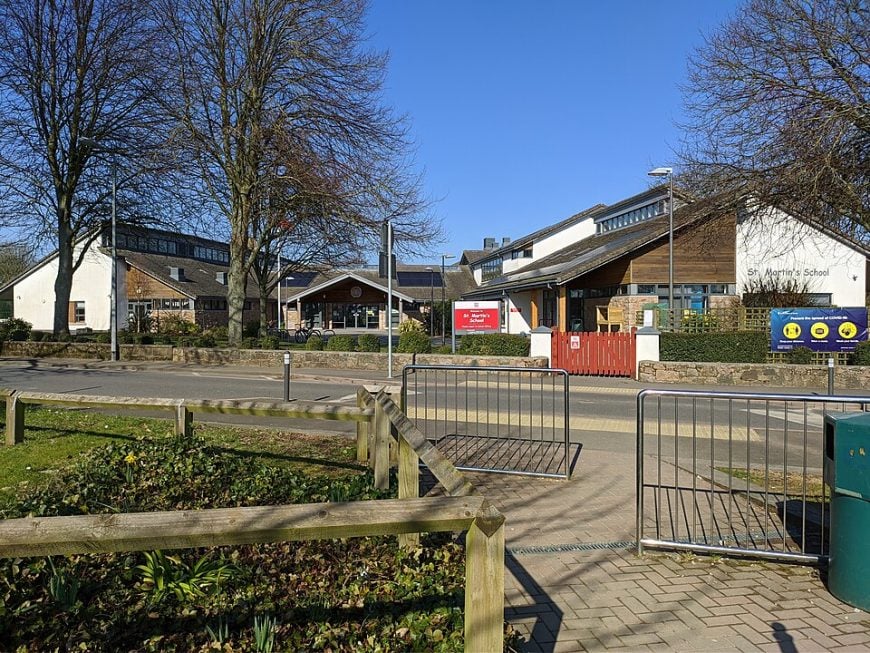
Home to about 4,000 residents, St. Martin is a picturesque parish on Jersey’s east coast, boasting verdant landscapes and historic landmarks. Visitors can explore the medieval Mont Orgueil Castle, walk along sheltered bays, or discover hidden dolmens like Faldouet. The local economy thrives on agriculture and tourism, focusing on preserving the parish’s natural beauty. St. Martin’s seclusion arises from its quiet rural areas and coastal cliffs, maintaining its traditional charm away from busier centers.
Where is St. Martin?
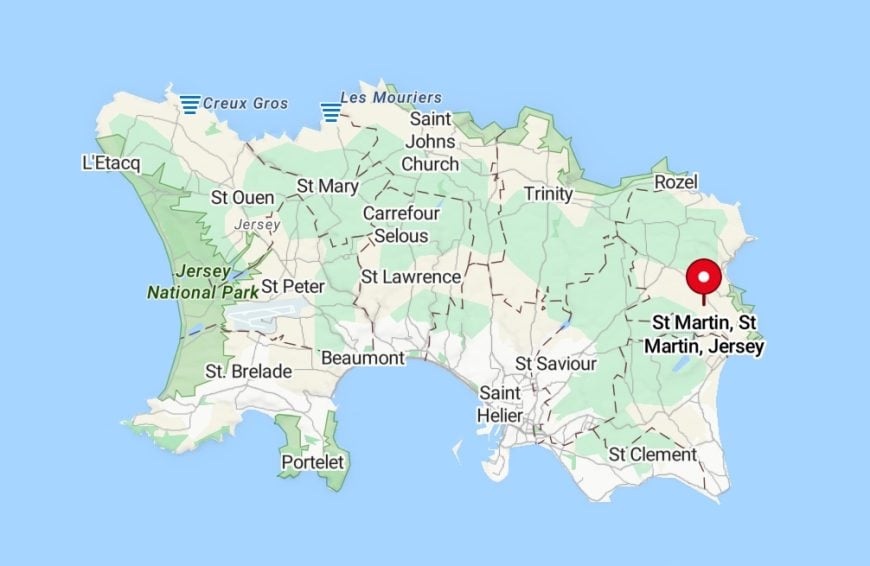
Positioned on the eastern side of Jersey, St. Martin offers sweeping views over the Royal Bay of Grouville. The parish’s secluded feel is enhanced by its network of country lanes and absence of major commercial developments. Accessible via scenic drives or bus routes from St. Helier, reaching St. Martin involves traversing some of Jersey’s most beautiful countryside. This blend of coast and countryside makes it a tranquil haven for visitors and residents alike.
5. Torteval: Unwind in Guernsey’s Rustic Southwest
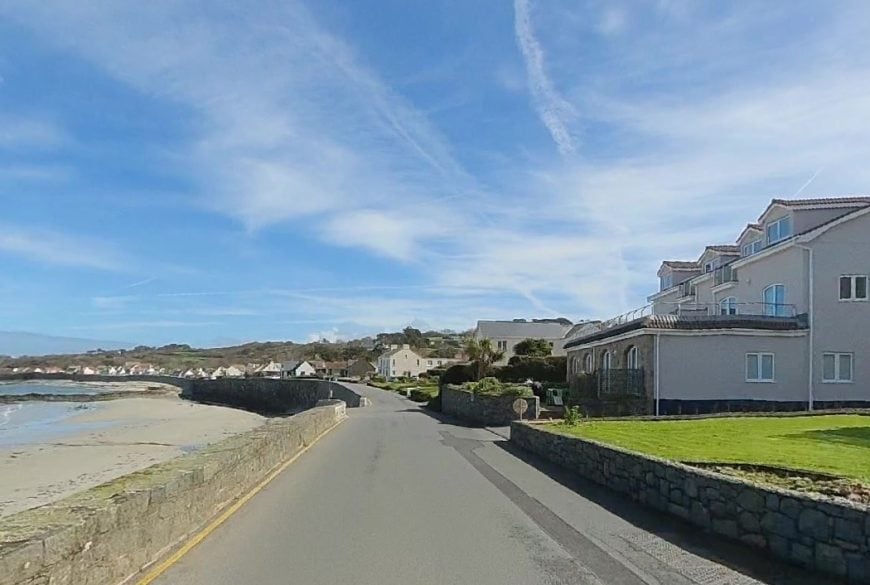
Torteval, with a population of around 1,000, is Guernsey’s smallest and most westerly parish, known for its rugged cliffs and rural charm. Visitors can admire the historic Torteval Church, featuring the island’s tallest steeple, or enjoy coastal walks along scenic paths like the Pezeries Point. Agriculture remains a traditional industry, giving Torteval its pastoral character. The parish’s seclusion is defined by its remote location, untouched landscapes, and lack of bustling commercial centers.
Where is Torteval?

Located in the southwest corner of Guernsey, Torteval is bordered by the sea on three sides, enhancing its secluded ambiance. Narrow, winding roads lead into the parish, isolating it from more populated areas. Accessible by car or limited bus services from St. Peter Port, the journey to Torteval offers impressive coastal vistas. Its geographical position and serene environment make it a secluded retreat where visitors can experience authentic island life.
4. L’Etacq: Jersey’s Hidden Coastal Retreat
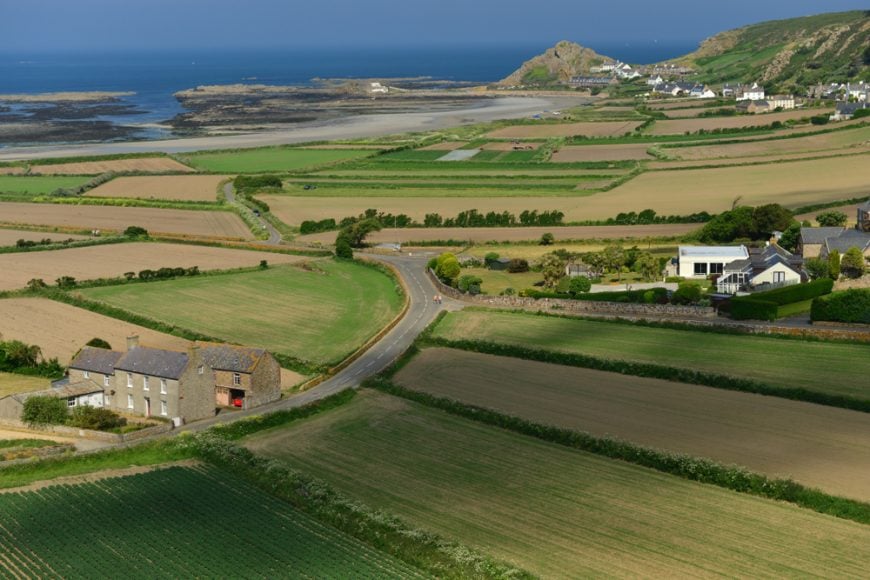
L’Etacq, a small hamlet with a modest population, sits at Jersey’s northwest corner, offering rugged coastlines and breathtaking sunsets. Surf enthusiasts can catch waves at St. Ouen’s Bay, while walkers explore coastal paths with stunning Atlantic views. With limited development, fishing and small-scale tourism are local activities. L’Etacq’s seclusion is due to its remote location, dramatic cliffs, and the expansive beach stretching away from the island’s more frequented areas.
Where is L’Etacq?
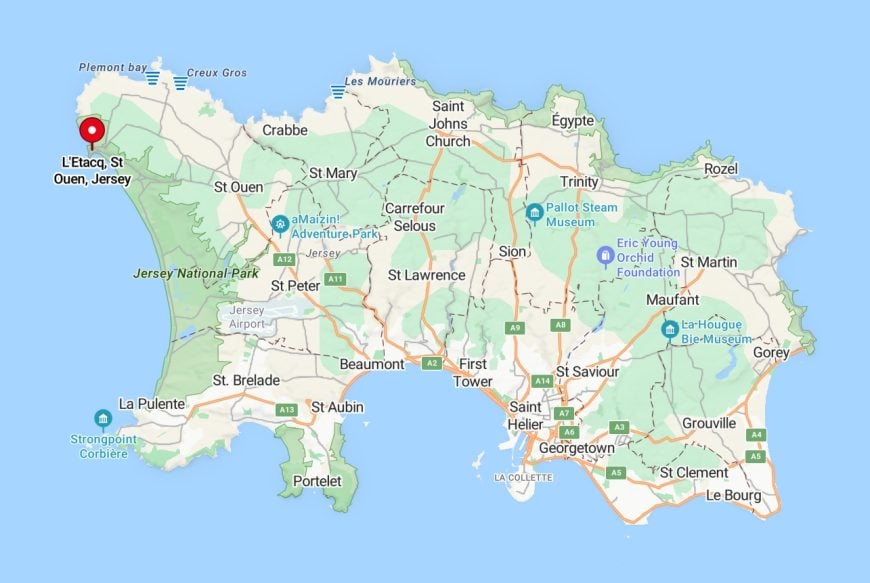
Perched at Jersey’s northwestern tip, L’Etacq is reached by winding coastal roads traversing the island’s countryside. Its secluded setting is enhanced by the vastness of St. Ouen’s Bay to the south and rugged cliffs to the north. Visitors can drive or take less frequent bus services from St. Helier, soaking in scenic landscapes along the way. The hamlet’s isolation provides a tranquil escape where the sounds of the sea are constant companions.
3. St. Anne: Alderney’s Quaint Capital
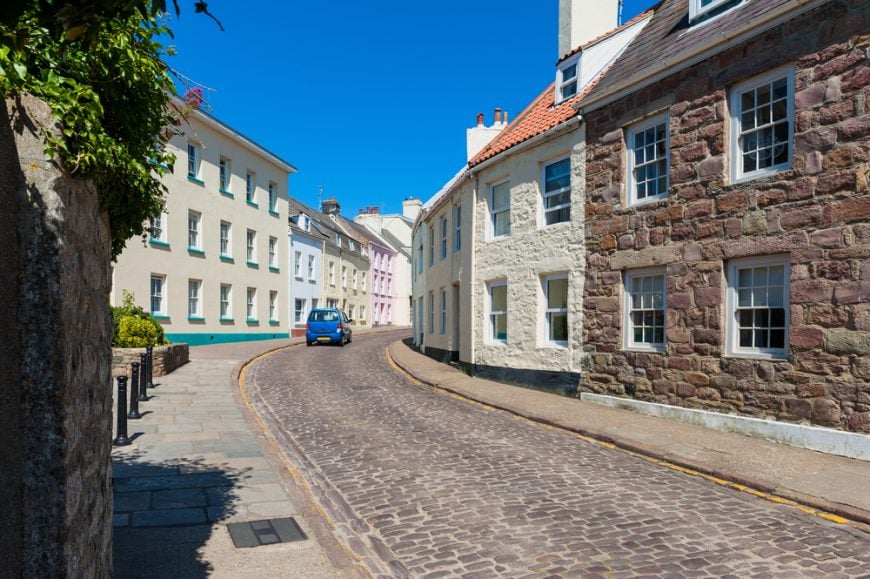
With a population of around 2,000, St. Anne is the charming capital of Alderney, featuring cobbled streets and historic Georgian buildings. Visitors can explore the Alderney Museum, visit St. Anne’s Church, or enjoy a pint in traditional pubs like The Georgian House. The main industries include tourism and fishing, with the town retaining an old-world charm untouched by commercialization. St. Anne’s seclusion comes from its location on the small island of Alderney, offering a peaceful atmosphere where community spirit thrives.
Where is St. Anne?
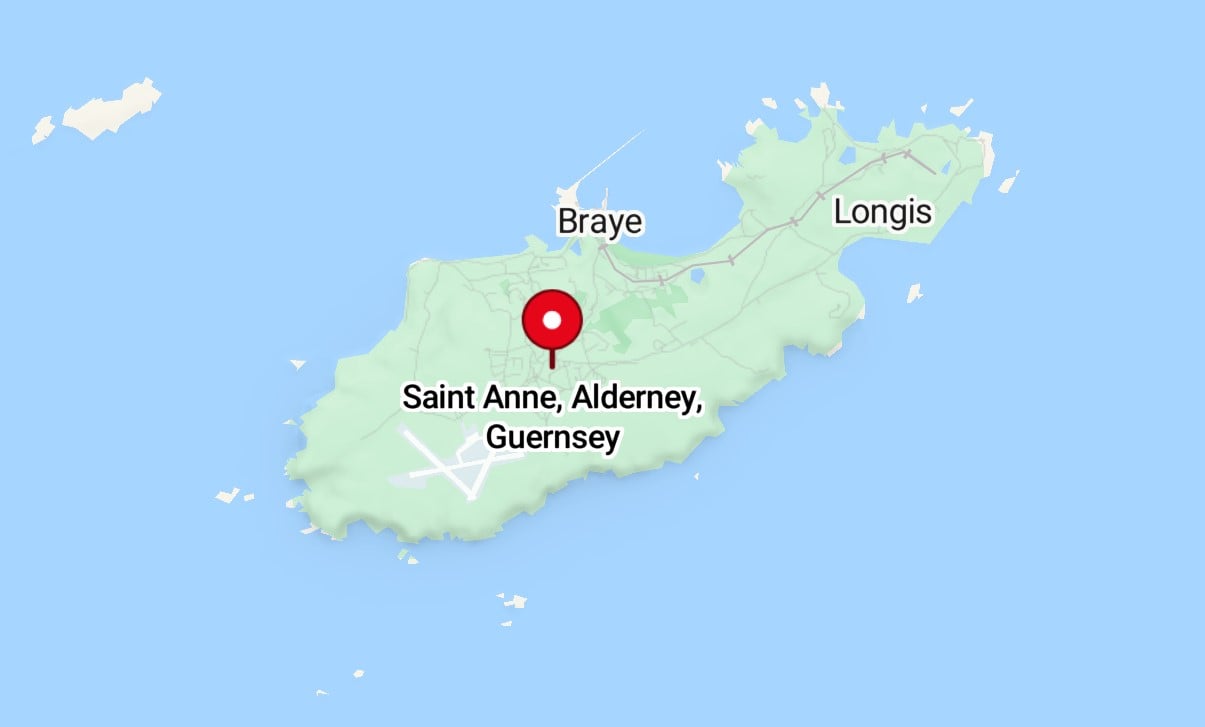
St. Anne is nestled in the center of Alderney, the northernmost of the Channel Islands. The town’s remote setting is accentuated by the island’s limited access, reachable only by small planes or ferry services from Guernsey and France. The journey enhances the sense of seclusion, as visitors traverse sea or sky to reach this tranquil haven. St. Anne’s isolated position makes it perfect for those seeking a peaceful retreat steeped in history and natural beauty.
2. Herm Island’s Secluded Paradise
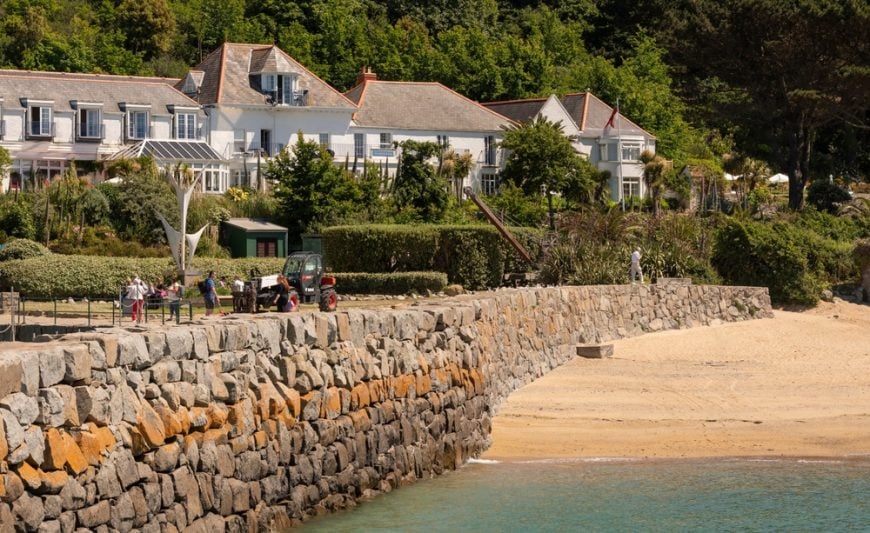
Herm Island, with a population of around 60 residents, is an untouched gem boasting pristine beaches and a tranquil village atmosphere. Visitors can relax on Shell Beach, explore coastal paths, or visit St. Tugual’s Chapel. Cars and bicycles are banned, preserving the island’s peaceful environment. The main industries are tourism and hospitality, catering to those seeking a retreat from modern life’s hustle. Herm’s seclusion is inherent, free of urban development and maintaining a slow pace inviting relaxation.
Where is Herm Island?
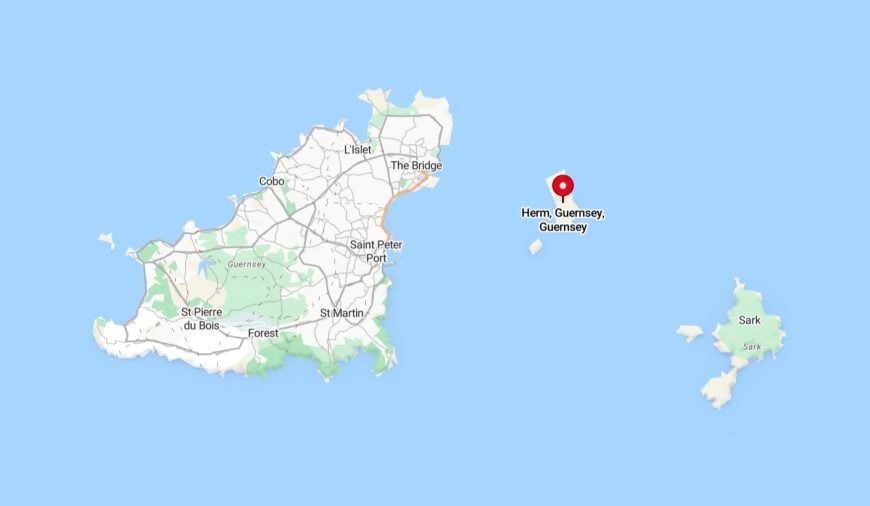
Just three miles east of Guernsey, Herm is the smallest of the Channel Islands open to the public. Its isolation is enhanced by its car-free policy and limited access, reachable only by a 20-minute ferry from St. Peter Port. The island’s separation and absence of vehicles create an atmosphere of serenity. Getting to Herm involves embracing the simplicity of island life, where walking is the primary mode of transport and nature is the main attraction.
1. Discover the Timeless Island of Sark

Sark, with approximately 500 residents, is a car-free sanctuary boasting dramatic cliffs and peaceful lanes steeped in old-world charm. Visitors can explore the Seigneurie Gardens, venture into the enchanting Gouliot Caves, or gaze at the stars in this designated Dark Sky Island. The main industries are tourism and agriculture, with the island preserving traditional practices. Sark’s seclusion is profound, offering an escape from modern distractions and providing a glimpse into a simpler, timeless way of life.
Where is Sark?
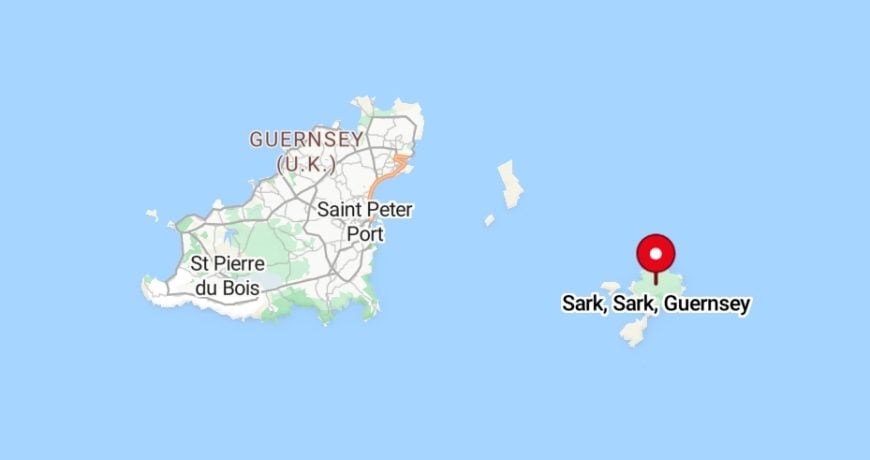
Sark lies six miles east of Guernsey and is accessible only by ferry, enhancing its remote allure. Cars are banned, with transportation limited to bicycles, horse-drawn carriages, and tractors, contributing to its tranquil atmosphere. The journey to Sark involves a ferry ride from Guernsey, often accompanied by stunning sea views and possible sightings of dolphins. This island’s isolation and commitment to preserving its natural beauty make it an unparalleled destination for those yearning to disconnect and immerse themselves in peaceful surroundings.





